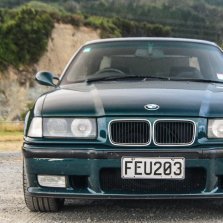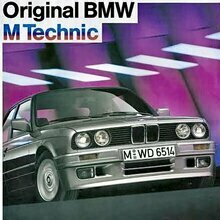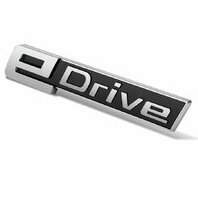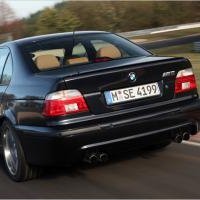Leaderboard
Popular Content
Showing content with the highest reputation on 07/26/20 in Posts
-
5 pointsIn an effort to stamp out the issues this car has, it was time to tackle the most serious issue; The front control arm bushes. It was noted in the PPI from the seller that the front control arm bushes were "split". What it didn't mention was that they are completely buggered. This would become a WOF issue in the near future, and wouldn't be helping the handing, so I had to fix it. Its a well known issue with the R5x Mini, and fairly easy to test by kicking the front of the front wheel and seeing how far back it bounces. Kicking my wheel revealed a ton of play. The internet widely regards the Powerflex PFF5-101 as the solution to all issues with the control arm bushes. Not only is it an upgraded poly bush, but it'll last for ages and is much easier to press into the housing than the OEM metal sleeve bush. The Powerflex bush is a three-piece design and doesn't need to be located in a certain location like the OEM ones. The original plan was to replace the bushes without removing the front subframe. This turned out to be the wrong idea as I just couldn't get the control arm to break off the taper of the inner ball joint, and as it turns out, all the ball joints were all stuffed and needed replacing too. You cannot remove the inner balljoint without lowering the subframe to some degree (and even if you could break the 100NM bolts free with limited space, you would have issues torquing them up again), so it's easier just to drop the subframe completely. It's not much more work to drop the whole subframe. My Quickjacks were perfect for this job, fitting the Mini jacking points and giving me a decent working height. You wouldn't want it any lower than this, or there may be clearance issues when pulling the subframe out from under the car. Obviously the first step once in the air is to get rid of the front wheels. It's amazing what these little 15" wheels and runflats weigh, they're probably the heaviest wheels I've had, and I've had those horrible things on the M328i and MX5. With the front wheels off it's time to start popping the ball joints. The tie rod end, swaybar link, and outer ball joints all need to be disconnected. I used the old loosen the nut and hit with a hammer method to remove these, but since I now have a splitter kit I will be using that from now on The inner joint I just could not pop. No amount of hammering would split the taper This is the point I just decided to drop the whole subframe. Thankfully the engine isn't mounted on the subframe, so its a matter of dropping the subframe with the steering rack attached and that's really it. There is a bunch of stuff that needs to be disconnected but otherwise it's all straight forward. One very helpful resource for this job is the Mod MINI Youtube channel. There is a specific video for doing this job, which I followed along as I went. To remove the subframe you need to remove the front bumper. Sounds weird, but the front crash tubes are attached to the subframe. And the crash beam needs to be removed next This is more or less the Service Mode for the front end. If you needed to do the radiator or supercharger, this is the minimum work you would need to do. With the beam off, unbolt the crash tubes, remove them, and start to unbolt the subframe. Don't forget to disconnect the ABS sensors from the subframe uprights, and the power steering pump. Check your O2 sensor wiring isn't clipped the to the PS hoses under the reservoir. Support the subframe on a jack with some wood to spread the load, and lower it down. That's it out. Now there is ample access to the arms, bushes and joints. This is the bastard. Unbolting these two bolts, and the two on the swaybar mount will allow you to remove the arm complete with bush and ball joint. Do note that if you have Xenon lights as I do, the sensor attached to the ball joint in the photos below is the auto levelling sensor. You MUST fit the correct sided ball joint to the arm (it has a locating hole drilled in it), and remember to fit this sensor during reassembly, as you'll be dropping the subframe again if you don't. There is also a small 10mm holding the sensor arm to the control arm, which will need to be removed. The bushes are well buggered. Both have little to no resistance to the arm being moved around, and you can see through the rubber in one. I'm not sure "split" is the word I would use if I were doing the PPI. With the arms removed and on the bench I could try popping the taper of the inner ball joint. First I tried a normal splitter. It just wasn't big enough, even with some modification with a grinder. The inner joint is quite limited in its access, and needs both a long reach splitter and one that opens wide. This resulted in me spending some more money and buying a kit of splitters, which had slightly larger splitter like the above, but that just kept popping off. The real deal was this big boy press with adjustable arms. It clamped perfectly onto the arm and with some rattle gun hammering, the splitter fell off. I thought it had slipped off, but it actually fell off when the taper popped on the joint. Finally! Removing them confirmed to me that I made the right decision; The inner joints were stuffed. Very floppy with almost no resistance. In contrast, the new ones are very stiff. In went the new ball joints torqued to 80NM. Next was to tackle the bushes. The obvious thing here is that you need to press the bushes off the arms first. If they were bad enough you might be able to just pull the outer part of the bush off leaving the inner on the arm, but mine needed to be levered off in one piece. This was done with my biggest prybar, levering between the bush and the flat on the arm. These are a metal sleeve bush pressed into a housing. This is what I was dealing with, big splits in the rubber all around and very little resistance to movement. Apparently these are fluid filled originally, but I couldn't see any fluid left in them. They were the original bushes To remove them, either use a big workshop press, or a reciprocating saw and metal blade. I chose the latter. There are two layers. The first is the inner rubber section, which also has its own metal sleeve in it. Using your saw, cut through this until you can use a chisel to force it out of the outer metal sleeve. Once that's out, carefully cut a slot into the outer metal sleeve. You don't want to cut into the housing. With the slot cut into the sleeve, it was easy to use a chisel to push the sleeve out Now it was time to press in the new bushes. I used a length of m12 rod, some washers and a pair of 15mm galv flanges as a makeshift press. This worked perfectly. A deadblow hammer was employed to push the bush in just that little bit more to make the lip pop out the other side Using lot of the supplied grease, grease the bush and fit the purple insert. Fit the washer to the arm, and then slip the arm into the bush. Done. A pair of reconditioned arms. Before I could reassemble I decided to replace the outer ball joints, and swaybar bushes. The swaybar bushes weren't too bad, a little smooth but minimal play and no cracking. They were the original bushes. I tried to get some poly bushes for this, but couldn't get any locally, and didn't have the time to order from overseas. The 24mm MCS standard bar seems to be odd, as few places listed that size, instead only having the smaller Non-S bushes listed. Torquing up the inner ball joint and swaybar bolts was a battle. The ball joint bolts were 100NM, which is quite a bit, but the swaybar/control arm bush mount bolts need 165NM. I had to get the help of my lovely Wife to stabilise the subframe whilst I swung off the torque wrench. I think that is the highest my torque wrench has been. The last thing to do was the outer ball joints. These are a pain because they press into the bottom of the knuckle, and are exposed at the top, allowing them to rust into the housing. There is also limited access. I managed to get the old ones out by using a punch and hitting the exposed parts of the flange. You can see the two shiny areas where I was hitting. You can see the rust that was binding it in place. I have heard of people replacing knuckles because their joints just would not come out One of the old joints was very loose and the other was actually OK. Best to replace in pairs though. I greased the surfaces of the new joints thoroughly and used the bolts to slowly draw it into the knuckle. Hopefully this one won't seize in there. Now that the subframe was complete, it was time to refit Remember to reconnect the power steering wiring and feed the PS res back up through the gap. Don't forget to torque everything up. Refer to your workshop manual for torque settings as there are a few. The gist is that the big bolts are 100NM, the small bolts/joints are 56NM. The previous owner identified that the power steering fan wasn't working, so included a replacement with the car. Since you have to remove this to remove the subframe, it was a good time to replace it. Four screws hold the fan in place. The old one was very gritty to spin. A quick dip through the parts washer to get all the old dirt and grease/oil off the bracket, and on went the replacement fan. Another reason the fan wasn't working was the low speed on the radiator fan also wasn't working, and the two are linked. A quick check at the radiator fan plug showed an open circuit on the radiator fan resistor, indicating the resistor had failed. Another common issue, and something the previous owner was preparing for as the car also came with an external replacement resistor. This external resistor mod is a common way to fix this issue without having to remove the radiator fan shroud, which requires a lot more work. It also allows the resistor to use the car body as a heatsink, and keeps it out of the path of weather, which is generally what kills the old resistors. A quick snip of the wire, some soldering, and the resistor was wired and mounted to an existing unused threaded hole. There is plenty more information out there on this mod, but a good thread is this one. The low speed fan now operates correctly when the AC is running, but I still haven't seen the PS fan operating. I'll need to keep an eye on that. I did replace a blown 5A fuse for the fan, so need to check if that blew again. A couple of other small things I did before taking the car for a test run, was the replace the cabin filter. The old one was manky as hell. Packed with dirt and leaves. I also fit the replacement vinyl red S logos that were missing from the car. Just looked weird with no colour on the rear and sides. I purchased them from this Etsy store. They have a whole range of different colours available. And finally, I replaced the park light bulbs with LED. I noticed when I had the front off the car that there are resistors tied into the park light wiring. I guess this is why the park lights were always super dim with the bulbs. I can only presume this was done in Japan and the LEDs were removed for compliance during import. The resistors will be there to trick the car into thinking the bulb is OK, otherwise it will usually trip a blown bulb warning with LEDs. After all that, the results were almost immediate. There is far less play in the steering, its nice and tight now and the car kinda rotates on its own axis when turning. This is a feature I remember from my old R50, but this car hasn't felt like that until now, it always felt unsure and vague. The thumping coming on and off accelerating is greatly lessened, and changing gears feels more direct. There must've been some sort of clunking or noise previously as there is that feeling of "huh, suddenly the car is quieter" even though I don't recall any noise when driving; much like when I did the rear arms in the Saab. It's a lot more fun to drive. Much more surefooted and confident. It's what a Mini should drive like. I can highly recommend refreshing the front end if it hasn't been done before. Even with only 127,000km on this car, it was all very worn out. I'm starting to feel less disappointment and regret with this car. It's just a shame its costing time and money to put it right just so I can enjoy it.
-
2 points
-
1 pointQuick and dirty vid, complete with crappy editing. https://www.belsee.com/belsee-best-aftermarket-oem-bmw-e81-e82-e87-e88-2004-2011-autoradio-radio-navigation-android-dvd-player-stereo-gps-google-maps.html
-
1 point
-
1 point
-
1 point
-
1 point
-
1 point
-
1 point1st off im glad to say ive finally completed cic retrofit. Ive followed cic retrofit instructions from online,but came accross a few issues that wernt mentioned in retrofit diys. Since i had original ccc jap nav,i had to get a male/female gps extn cable from old gps arial cable in the boot all the way up to front of car to cic,also i didnt have money for fibreoptic loop isolator cause spent all on cic,so i had to trial and error on the fibre optic loop under rear cnr seat(a torch against old ccc fibre optic cable works a treat,showed which cable to disconnect from loop)after everything was connected,i had a lot of trouble programing fsc certs etc to enable nav after patching,i gave up after weeks trying to get nav to work,id basically tried everything,so i bought a emulator,but the emulator wont work because i had already patched the cic and virginized it,so i was back to square 1 again,i kept playing around with fstool2.exe and it connected to car,and because fstool2 connected i assumed programe was working correctly,but couldnt write fscs etc,so i thought it might be because cic/car vin conflicts,but after alot of trial error i found the issue was bad fstool2 car server i found carserver online and i could finally write fsc and sigs also i set vin with fstool2 didnt even need to use tool32 to change vin.ive attached a pdf i found online i hope the owner doesnt mind,helped me alot with fstool error dramas,it also has links to new carserver etc. hopefully some of this info helps for whoevers doing cic retrofits. BMW CIC PATCHER v2.pdf
-
1 pointI bet the marketing guy who wrote that waffle was crying all over his keyboard whilst typing, wondering where he went wrong in his career path. Its the polar opposite of all those things, its about as charming and elegant as Trump wearing crocs and a mankini.
-
1 pointAttach a lever to a long arm, thats hooked up to the seat, so when you sit down the lever pushes an arm that presses the button. Or you could just press the button ?
-
1 point
-
1 point
-
1 pointStill are imo, they have aged really well. Not sure about that price though. Not far off E39 M5 pricing, more than E34 540i manual pricing. Just because it has receipts for 40k doesnt mean thats what its worth. The market will decide in the end.
-
1 pointI wondered when this may pop up here. Stunning car but given the Techno Violet(?) manual 540i msport eventually sold for mid teens, its quite a stretch...
-
1 pointE90, complete with M stripes, nurburgring stickers, and quad remus exhaust tips... RH side ones didnt go anywhere and appeared to be glued on, but I appreciate the effort in keeping that much thrust balanced.
-
1 pointSorting out the rear door vapour barriers (VB’s). They started leaking about 3 years ago, but not bad enough to soak the carpet thankfully. Back then i decided to use some butyl mastic in a caulking gun which turned out to be a temporary fix. This attempt I’ve decided to go with the official bmw procedure using new VB’s as the old ones I couldn’t bear cleaning off old butyl. Below is a description of the procedure. So starting with removing the old VB I then heated up and scraped off as much butyl as possible from the inner door panel. Using a rag and some prepsol I managed to fully clean off all the old butyl followed by a wipe down of the contact area with isopropyl. Then apply fresh butyl tape to the VB leaving the wax paper on. Offer it up to the door panel. Peel the wax paper off as you press down until the VB is fully attached to the inner door panel. Heat up the perimeter of the door panel and use a seam roller to press down on the butyl for good adhesion. Instructions say to let the butyl “set” for 5 hours before doing and load tests (i.e leak test, open/closing door). Fingers crossed this is a lasting repair.
-
1 point@Cammsport? It doesn't satisfy your mileage requirement but might tick enough boxes... Edit: I don't see that colour around often and quite like it.
-
1 pointLooks tidy, seat bolsters would clean up easy as. These recent listings are making @bradgalbraith car look like a steal.
-
1 point








